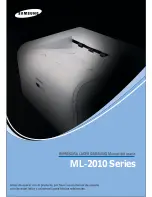
24
How Do I Secure Material to the Nomad 3?
Regardless of what type of project you are making, one of the first things to determine is how you will secure the
material to the machine. This concept is called workholding. There are several common ways to hold material
down. The specifics of your project, part, material, and other requirements will determine which method you
choose. The main objective for workholding is to secure your material to the machine in a way that will not yield to
the forces of machining. The most common forms of workholding for the Nomad 3 are:
• Double
-sided tape
•
Low-profile vise
• Top clamps
1
•
Machinable fixturing wax
Workholding Options in the Carbide 3D Store
Low-Profile Vise
We make this vise from scratch, in-house, specifically for Nomad
machines. The vise is 2
″
wide × 8
″
long. The maximum clamping width is
6.5
″
. Hardware for attaching it to the table is included.
Machining Steel and Stainless Steel on the Nomad video
see the low-profile vise in action.
Nomad Low Profile Vise Installation video
Tiger Claw Clamps
The Tiger Claw Clamp is a low-profile, high-quality stainless-steel clamp
that can be used on the Nomad. With over 15mm of lateral travel these
beasts will hold your job down with a tight grip, no matter what you’re
making. The Tiger Claw Clamps have a secure grip that works great for
carving projects since there’s no vertical clamping face.
Tiger clamps come in two sizes, standard and compact. The Tiger Claw
Compact clamps are shorter and have a lower profile than the standard
Tiger Claw clamps, for those applications where space is at a premium.
They are very useful with jigs and fixtures, where there is no need for
placement adjustment and where the reduced clamp track (2mm) will be
sufficient.
PRO TIP:
It is good habit to select a workholding option early in a project, so as to have the opportunity to
cater to any workholding constraints in the design itself.
















































